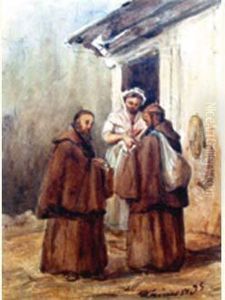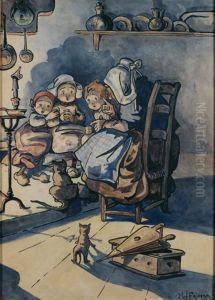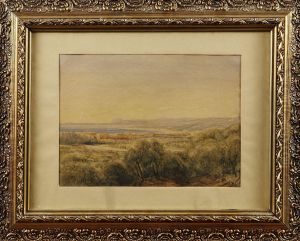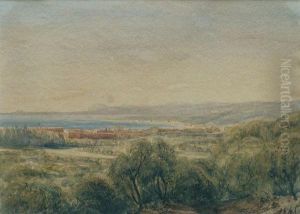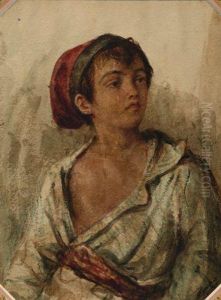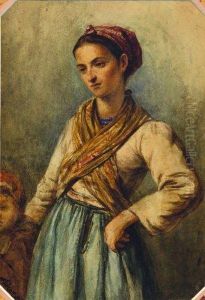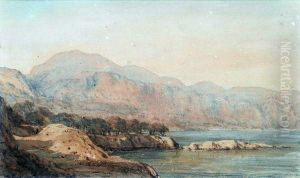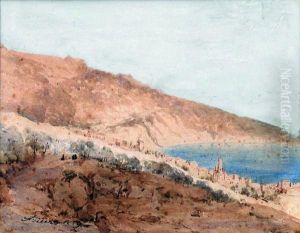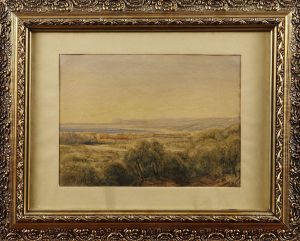Joseph Fricero Paintings
Joseph Fricero was a notable figure in the 19th-century European art world, particularly recognized for his contributions to the French painting scene. Born in 1807, Fricero navigated through a period of significant transformation in the art world, witnessing the shift from Neoclassicism to Romanticism, and eventually to the early inklings of Impressionism. Despite this, he managed to carve out a unique stylistic identity that blended elements of Romanticism with the detailed observation characteristic of the emerging Realist movement. His works, often rich in emotional depth and characterized by their vivid portrayal of natural and architectural elements, garnered attention for their innovative approach to composition and light.
Fricero's early years were marked by rigorous training and a deep commitment to mastering his craft. He studied under prominent artists of his time, which allowed him to develop a versatile skill set. Throughout his career, he exhibited his works in various salons and galleries, earning accolades and the respect of his peers. His paintings often depicted scenes from history and mythology, as well as landscapes and portraits, showcasing his ability to capture the essence of his subjects with both precision and sensitivity.
Despite his success, Joseph Fricero's name is not as widely recognized today as some of his contemporaries. This is partly due to the overshadowing fame of artists like Delacroix, Ingres, and later, Monet and Renoir. However, Fricero's contribution to the development of 19th-century French art is undeniable. He played a significant role in the transition periods between major art movements, influencing the direction of French art with his innovative techniques and unique aesthetic vision.
Fricero's legacy is preserved through his surviving works, which continue to be studied and appreciated for their historical significance and artistic merit. His death in 1870 marked the end of a career that had spanned some of the most tumultuous and transformative decades in European art history. Today, Fricero is remembered as a pivotal figure in the landscape of 19th-century French painting, a testament to the enduring impact of his artistic contributions.
